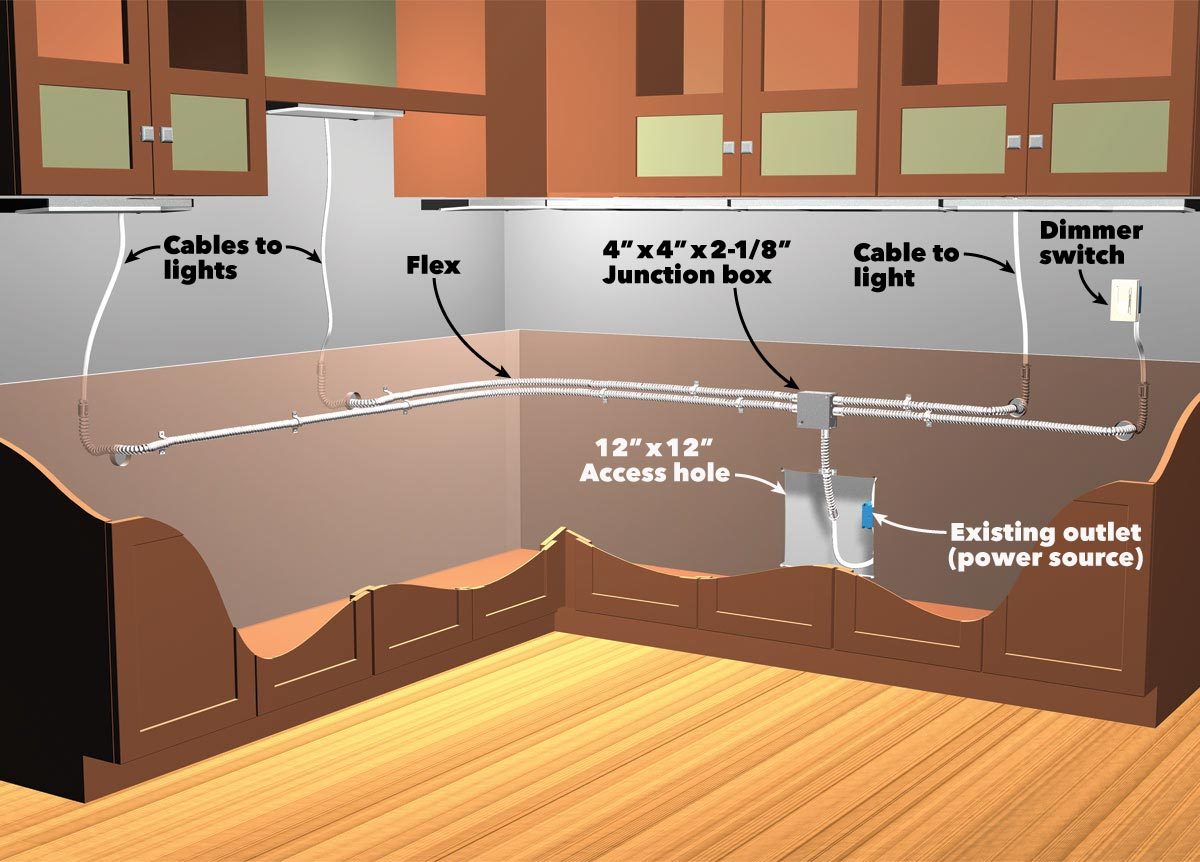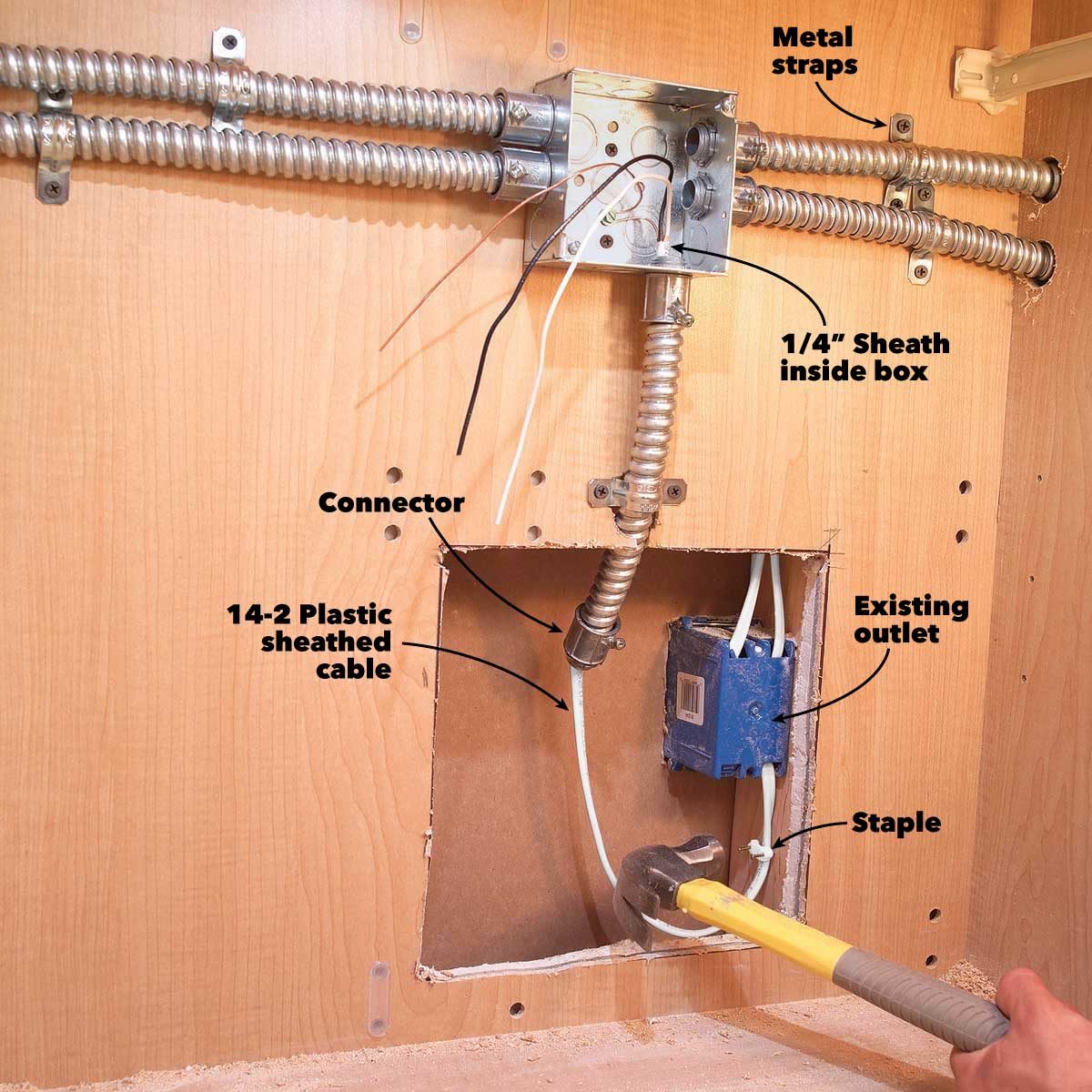Understanding Under Cabinet Fluorescent Light Ballasts

Under cabinet fluorescent lights are a popular choice for illuminating kitchen countertops and other workspaces. These lights provide bright, even illumination and are energy-efficient. However, to function properly, these lights require a ballast, which is an essential component responsible for regulating the flow of electricity to the fluorescent tubes.
Ballast Function in Under Cabinet Fluorescent Lights
The ballast in an under cabinet fluorescent light fixture plays a crucial role in starting and controlling the flow of electricity to the fluorescent tubes. It performs several important functions:
* Starting the fluorescent tubes: Fluorescent tubes require a high voltage to start, and the ballast provides this initial surge of energy.
* Limiting current: Once the tubes are lit, the ballast limits the current flowing through them, preventing them from overheating and burning out.
* Regulating voltage: The ballast maintains a stable voltage across the tubes, ensuring consistent brightness.
* Protecting the circuit: The ballast protects the circuit from damage caused by short circuits or overloads.
Types of Ballasts
There are two main types of ballasts used in under cabinet fluorescent light fixtures: magnetic ballasts and electronic ballasts.
Magnetic Ballasts
Magnetic ballasts are the older type of ballast and are typically found in older fixtures. They consist of a coil of wire that creates a magnetic field to regulate the current flowing through the tubes.
Advantages of Magnetic Ballasts
* Relatively inexpensive: Magnetic ballasts are generally less expensive than electronic ballasts.
* Durable: They are known for their durability and can withstand harsh environments.
Disadvantages of Magnetic Ballasts
* Inefficient: Magnetic ballasts are less energy-efficient than electronic ballasts, resulting in higher energy consumption.
* Bulky and heavy: They are bulky and heavy, making them difficult to install in tight spaces.
* Humming noise: They can produce a noticeable humming noise when operating.
Electronic Ballasts
Electronic ballasts are more modern and are becoming increasingly popular due to their advantages. They use electronic circuitry to regulate the current flowing through the tubes.
Advantages of Electronic Ballasts
* Energy-efficient: Electronic ballasts are more energy-efficient than magnetic ballasts, resulting in lower energy consumption.
* Compact and lightweight: They are compact and lightweight, making them easier to install in tight spaces.
* Quiet operation: They operate quietly without producing any noticeable humming noise.
* Improved light quality: They produce a brighter, more consistent light output than magnetic ballasts.
Disadvantages of Electronic Ballasts
* More expensive: Electronic ballasts are generally more expensive than magnetic ballasts.
* Sensitive to voltage fluctuations: They can be sensitive to voltage fluctuations, which can affect their performance.
Components of an Under Cabinet Fluorescent Light Ballast
Under cabinet fluorescent light ballasts typically consist of the following components:
* Transformer: This component converts the incoming voltage to a lower voltage suitable for the fluorescent tubes.
* Capacitor: This component stores electrical energy and helps to regulate the voltage across the tubes.
* Starter: This component initiates the starting process by providing a high-voltage surge to the tubes.
* Choke coil: This component limits the current flowing through the tubes, preventing them from overheating and burning out.
Installation and Maintenance: Under Cabinet Fluorescent Light Ballast

Installing and maintaining under cabinet fluorescent light ballasts is a relatively straightforward process that can be handled by most homeowners with basic DIY skills. Understanding the different components and their functions, along with some basic troubleshooting techniques, will help you ensure optimal performance and longevity of your under cabinet lighting.
Installing an Under Cabinet Fluorescent Light Ballast
Installing an under cabinet fluorescent light ballast involves connecting the ballast to the power source, attaching the fluorescent tubes, and securing the fixture to the cabinet.
- Disconnect power to the circuit. Always prioritize safety by turning off the power to the circuit where you will be working. This prevents electrical shock and ensures a safe working environment.
- Locate the existing wiring. Identify the wires connected to the existing under cabinet lighting fixture. Typically, you will find two wires, one black (hot) and one white (neutral).
- Connect the ballast to the power source. Connect the black wire from the ballast to the black wire from the existing wiring. Similarly, connect the white wire from the ballast to the white wire from the existing wiring. Ensure the wires are securely connected to the terminals on the ballast.
- Attach the fluorescent tubes. Carefully insert the fluorescent tubes into the sockets on the fixture. Make sure the tubes are properly seated and aligned.
- Secure the fixture to the cabinet. Use screws or clips to secure the fixture to the underside of the cabinet. Ensure the fixture is securely mounted to prevent it from falling or becoming loose.
- Turn on the power. Once you have completed all the connections, carefully turn the power back on and test the fixture. If the lights are working, you have successfully installed the ballast.
Troubleshooting Common Problems
Common problems with under cabinet fluorescent light ballasts can include flickering lights, dim lights, or complete failure of the fixture.
- Flickering lights: This could be caused by a faulty ballast, loose wiring connections, or a failing fluorescent tube. Check the wiring connections, replace the fluorescent tubes, and if the problem persists, replace the ballast.
- Dim lights: This can be due to a failing fluorescent tube, a faulty ballast, or a problem with the power supply. Replace the fluorescent tubes, check the wiring connections, and if the problem persists, replace the ballast.
- Complete failure of the fixture: If the fixture is not working at all, the problem could be a blown fuse, a tripped circuit breaker, or a faulty ballast. Check the fuse box and reset the circuit breaker. If the fixture still doesn’t work, replace the ballast.
Replacing a Faulty Ballast
Replacing a faulty ballast is a simple process that involves removing the old ballast and installing a new one.
- Disconnect power to the circuit. Before attempting any work on the fixture, always turn off the power to the circuit to prevent electrical shock.
- Remove the old ballast. Carefully disconnect the wires connected to the old ballast. Unscrew the ballast from the fixture.
- Install the new ballast. Connect the wires from the new ballast to the corresponding wires from the fixture. Secure the new ballast to the fixture using the provided screws or clips.
- Turn on the power. Once the new ballast is installed, carefully turn the power back on and test the fixture. If the lights are working, you have successfully replaced the faulty ballast.
Tools and Materials
You will need the following tools and materials to install and maintain under cabinet fluorescent light ballasts:
- Screwdriver
- Wire strippers
- Voltage tester
- Replacement ballast
- Replacement fluorescent tubes
- Wire connectors
Choosing the Right Ballast

Selecting the right ballast is crucial for ensuring optimal performance and longevity of your under-cabinet fluorescent light fixture. The ballast acts as the “brain” of the system, controlling the flow of electricity to the bulbs and determining their brightness. Choosing the wrong ballast can lead to flickering, buzzing, premature bulb failure, and even safety hazards.
Understanding Ballast Features
To choose the right ballast, it’s essential to understand the various features and how they affect performance.
- Wattage: This indicates the amount of power the ballast consumes. Higher wattage generally means brighter light output, but also higher energy consumption.
- Voltage: This refers to the electrical voltage required by the ballast. Most under-cabinet fluorescent light fixtures operate on 120 volts, but some may require 240 volts.
- Bulb Compatibility: Ballasts are designed to work with specific types of fluorescent bulbs. Some are compatible with T8, T12, or even compact fluorescent (CFL) bulbs. Make sure the ballast you choose is compatible with the bulbs you plan to use.
- Energy Efficiency: Modern ballasts are designed to be more energy-efficient than older models. Look for ballasts with a high energy efficiency rating, which can help reduce your electricity bill.
- Noise Level: Some ballasts can produce a noticeable humming sound, especially when they are new. Choose a ballast with a low noise rating if you are concerned about noise levels.
- Lifespan: The lifespan of a ballast varies depending on the quality and type. High-quality ballasts can last for several years, while lower-quality ballasts may need to be replaced sooner.
Choosing the Right Ballast for Your Needs
Here’s a guide to help you choose the appropriate ballast based on your under-cabinet fluorescent light fixture and desired brightness:
- Type of Fixture: Different types of under-cabinet fluorescent light fixtures require different types of ballasts. For example, some fixtures use electronic ballasts, while others use magnetic ballasts.
- Desired Brightness: The wattage of the ballast determines the brightness of the light output. Higher wattage generally means brighter light, but also higher energy consumption.
- Bulb Type: The ballast must be compatible with the type of fluorescent bulbs you plan to use. Make sure to check the ballast specifications for bulb compatibility.
- Energy Efficiency: Choose a ballast with a high energy efficiency rating to reduce your electricity bill.
- Noise Level: If you are concerned about noise levels, choose a ballast with a low noise rating.
- Lifespan: Opt for a high-quality ballast with a longer lifespan to avoid frequent replacements.
Factors to Consider When Choosing a Ballast, Under cabinet fluorescent light ballast
When choosing a ballast, consider the following factors:
- Energy Efficiency: Modern ballasts are designed to be more energy-efficient than older models. Look for ballasts with a high energy efficiency rating, which can help reduce your electricity bill.
- Noise Level: Some ballasts can produce a noticeable humming sound, especially when they are new. Choose a ballast with a low noise rating if you are concerned about noise levels.
- Lifespan: The lifespan of a ballast varies depending on the quality and type. High-quality ballasts can last for several years, while lower-quality ballasts may need to be replaced sooner.
- Cost: Ballasts vary in price depending on their features and quality. It’s essential to find a balance between cost and performance.
The hum of an under cabinet fluorescent light ballast can be a familiar sound in many kitchens, but for those seeking a more modern and convenient solution, there’s under cabinet lighting google home integration. These smart systems allow you to control your lighting with voice commands, creating a more streamlined and efficient kitchen experience.
However, if you’re still working with a traditional fluorescent ballast, make sure to check for any signs of flickering or buzzing, which could indicate a need for replacement.
The hum of an under cabinet fluorescent light ballast was a familiar soundtrack in kitchens of yore. Those days are gone, replaced by the sleek, silent efficiency of square LED under cabinet lights. While the ballast may be a relic of the past, the need for bright, focused light under cabinets remains, and LEDs deliver that with a modern touch.